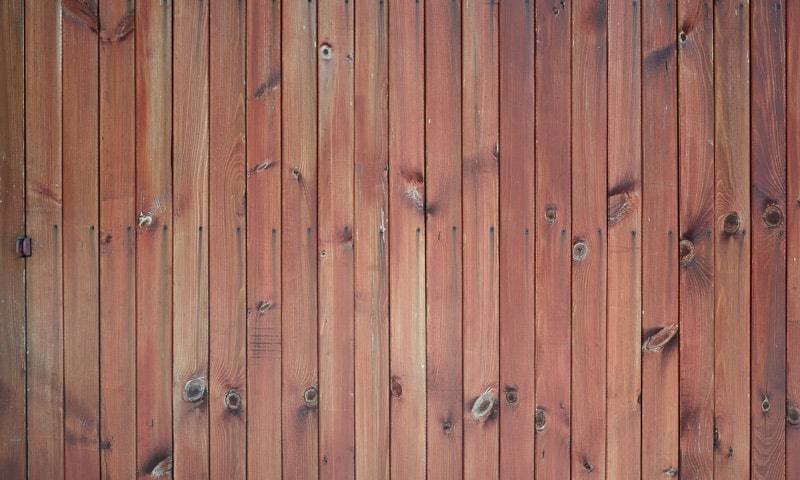John and Anne are neighbors. John decides he wants to landscape his property and seeks permission from Anne to build a fence surrounding his property to enhance his landscape. Anne agrees to the fence, and without first checking the language of the deeds of both Anne’s and John’s property, John and Anne agree that the fence will be built in a certain location that they both believe is the boundary between their properties. Many years go by and Anne decides to sell her home to Mary. After Mary purchases the land from Anne, she decides that she does not like one of the structures that John has built on his side of the fence and seeks to force John to remove the structure. Mary consults the original deed for her property and has an official survey completed. The results of the survey show that the fence was built two feet inside of Mary’s property, making the fence an inaccurate representation of the actual boundary between John and Mary’s property. In cases like this, or similar to this, the issue becomes, which boundary line becomes the official boundary line between the two properties? Can Mary enforce the description of the property in the original deed? Can John enforce the fence as the actual boundary? Who has actual ownership of the two feet in question?
Unfortunately, this issue can become a common problem between landowners. When handling a boundary dispute, there are many steps that can be taken in order to resolve the dispute, however, it is important to consult an attorney as soon as possible to ensure that all property rights are protected. When a boundary dispute arises, after consulting with an attorney, the best place to start is by reading the property deed and requesting an official survey of the property to determine where the boundary lies. Within the deed itself, there should be specific language outlining the boundaries of the property.
If the deed’s description does not match the perceived boundary, as is the case in the scenario involving Mary and John, it can be much more difficult to settle the dispute without a third party becoming involved (usually the court). There may also be an issue if the language of the deed is ambiguous, or if there is some question over whether the title was actually transferred. If the issues can be resolved between the parties, either party may ask the court to resolve the boundary dispute by filing an action for quiet title. When a court determines an action for quiet title, it is determining who the lawful owner is of any given piece of property. Therefore, even if the language in the deed contradicts the decision of the court, the court’s ruling will be final in determining who owns the land.
In order for the court to make a determination that the boundary lines stated within the original deed are no longer controlling, the person claiming that the current boundary line should be the official boundary line has to prove at least one of the three following defenses: (1) there is a boundary by acquiescence; (2) there is a boundary by agreement; or (3) there is a boundary by estoppel.[1] Anyone of these four defenses, if proven, would constitute a sufficient basis for allowing the court to change the specifics of the original deeds.
Boundary by Acquiescence
Boundary by acquiescence is a defense that should be raised anytime there is a long-standing marker that indicates where property owners understand a boundary to be located.[2] For example, if the property owners have constructed a fence between their properties to indicate the boundary, boundary by acquiescence should be considered as a defense.
In order to prove this defense, the party claiming that the physical marker should constitute the boundary has to prove: (1) there has been an occupation of the land up to a visible line marked by monuments, fences, or buildings; (2) there has been a mutual acquiescence or acceptance in the line as a boundary by both parties; (3) the acceptance of the marker as the boundary has lasted for more than 20 years; (4) the two parties in the action are adjoining landowners; and (5) the disputed property is actually occupied or used.[3]
Under the boundary by acquiescence defense, John would win the action if he could prove that: (1) the fence constituted a marker of the boundary between his and Mary’s property; (2) Anne and him agreed that the fence was to be the boundary between the properties; (3) the fence was built over 20 years ago and has been continuously used as the boundary line; (4) Mary’s and his property are adjoining each other; and (5) John has been using the property in question. Given the facts stated in the scenario, so long as the 20-year requirement is met, John would prevail on a defense of boundary by acquiescence and the court would hold that the boundary line was now set at the line of the fence.
Boundary by Agreement
Boundary by agreement is a defense that honors verbal or unrecorded agreements that are made to settle a property boundary when there is uncertainty between all parties as to where the actual boundary is located.
In order to prove this defense, the party claiming that the agreement should constitute the boundary must prove: (1) there was an agreement between adjoining landowners; (2) the agreement settled a boundary line that was uncertain or in dispute; and (3) the party claiming the defense would suffer an injury if the agreement were not upheld.
Unlike boundary by acquiescence, there is no time requirement in order to prove boundary by agreement. However, this defense can be more difficult to prove than any other defense since it requires proof of an express agreement. In most instances where this defense is asserted, the agreement in question was an oral agreement between the parties. Where an oral agreement is at question, either party may have difficulties in proving that the oral agreement was actually made.[4]
In the scenario of John and Mary, so long as John can prove that Anne made an affirmative agreement that the fence would constitute the boundary between their properties, and so long as Mary would have been able to see that the fence was the boundary line prior to purchasing the property, John would be successful under this defense.
Boundary by Estoppel
Boundary by estoppel is a defense that is designed to prevent injustice and injury to property owners who rely upon representations regarding property lines made by the other party in the case.
In order to prove this defense, the party claiming that there would be an injustice if the agreement were not enforced has to prove: (1) there was an affirmative admission, representation, or act regarding placement of the boundary which is inconsistent with the claim later asserted by the other party; (2) there was an action by the property owner claiming the defense in reasonable reliance upon the representation; and (3) there would be an injury to the property owner claiming the defense if the representation were not enforced.
In order for this defense to apply, the representation made by the other party must be an inaccurate representation. Therefore, it is required that neither party was aware of the actual boundary line when the representation was made and that both parties agreed that the representation would be the actual boundary line.[5]
In determining whether this defense would fit the scenario above, it would be important to know whether John and Anne actually believed that the fence constituted the actual boundary line. If they both believed that the fence was actually on the boundary line as stated in the deed, then this defense would apply. However, if either Anne or John did not believe that the fence was the actual boundary line, but instead agreed that it was a good estimation of the boundary line, then the defense would fail. This is an important distinction since it is what separates this defense from the defense of boundary by acquiescence.
Given that boundary lines can become the source of costly litigation, it is essential that the deed be consulted and an official survey was taken (if practicable) before any sort of boundary marker is created between two adjoining properties. Not only does checking the deed help ward off future litigation, but it can also be an instrumental tool in ensuring that the property, as described in the deed, remains fully intact. If the deed is not first consulted, the property can be lost when a court later rules that one of the above defenses applies and relocates an official boundary line in compliance with the rule of law.
[1] Bahr v. Imus, 250 P.3d 56 (Utah 2011)
[2] For a discussion on the boundary by acquiescence, see Elliot R. Lawrence, Settling Boundary Disputes Using Utah’s Boundary by Acquiescence Doctrine, 27-Dec. Utah B.J. 46 (2014).
[3] See Dean v. Park, 2012 UT App. 349; Essential Botanical Farms, LC v. Kay, 2011 UT 71; Q-1, LLC v. Hughes, 2014 UT App. 19; and Anderson v. Fautin, 2014 UT App. 151
[4] Bahr, 250 P.3d at 67.
[5] Bahr, 250 P.3d at 65.





Leave A Comment